Fan's of ultralightweight tents and shelters pay attention: it’s expensive, but the award-winning Outdoor Research Helium Bivy is a top-of-the-range bivvy bag – one for the bivouac connoisseurs.
It’s lightweight, durable, waterproof and breathable, with an excellent hooped design. It can be fully sealed up, with a curved pole raising the canopy above your head and significantly proving comfort levels.
You get lots of clever features and, remarkably, all of this clocks in at an impressively low weight of just 494g. For the occasional bivvier it’s probably overkill, but serious bivvy bag enthusiasts will absolutely love it – it’s one of the best out there and to us, is a benchmark for other bivvies.
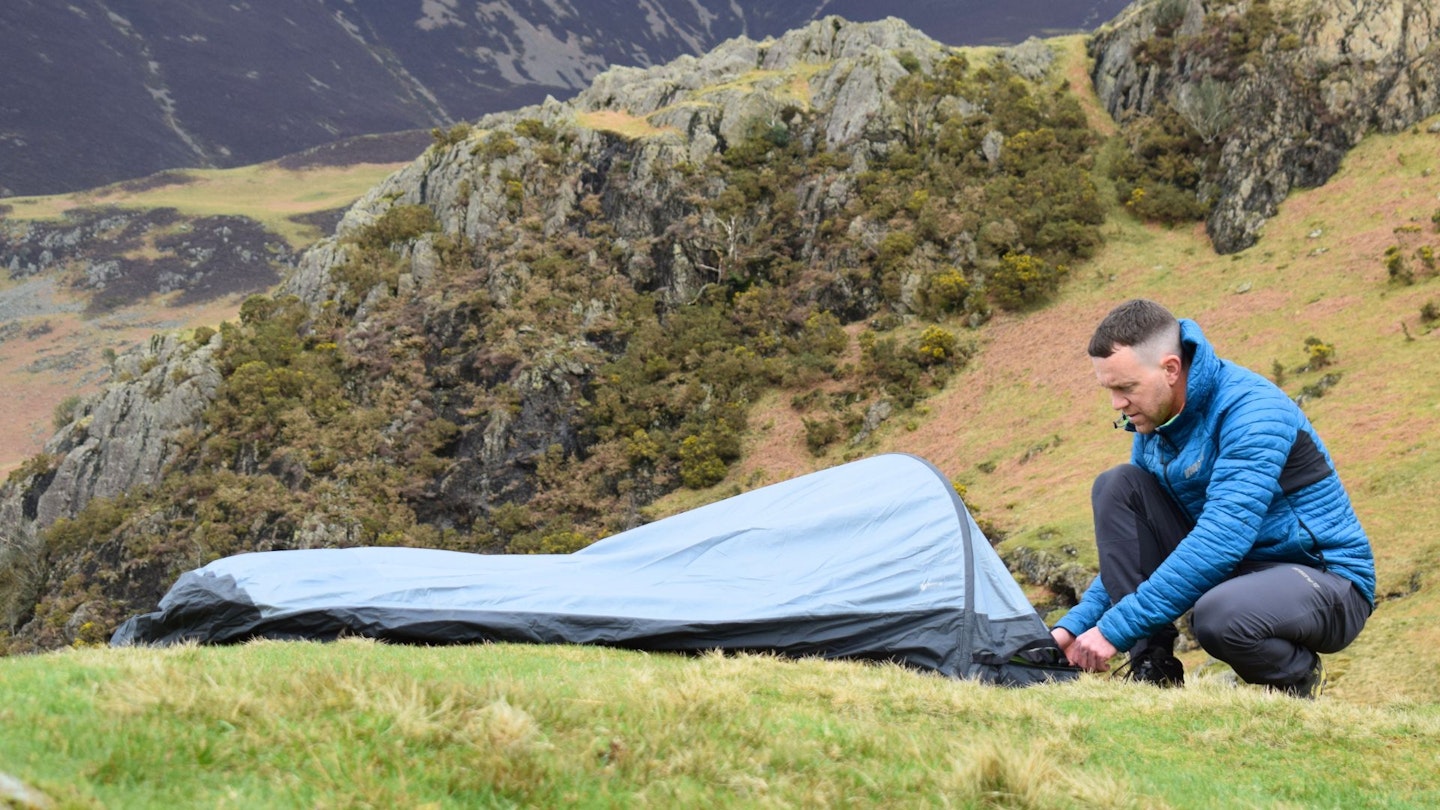 LFTO
LFTOPros
- Protective
- Versatile
- Lightweight for hooped design
- Better waterproofing and breathability than most rivals
- Surprisingly durable
Cons
- Not as roomy as some rivals
- Some rivals have superior eco credentials
| Weight | 494g |
| Packed size | 31 x 9cm |
| Dimensions | 208 x 66cm (shoulder)/48cm (foot) |
| Main material | Bluesign-approved 30D nylon 2.5-layer Pertex Shield Diamond Fuse (40D nylon floor) |
| Waterproof rating | 20,000mm HH |
| Breathability rating | 20,000g/m²/24 hour |
Design and features
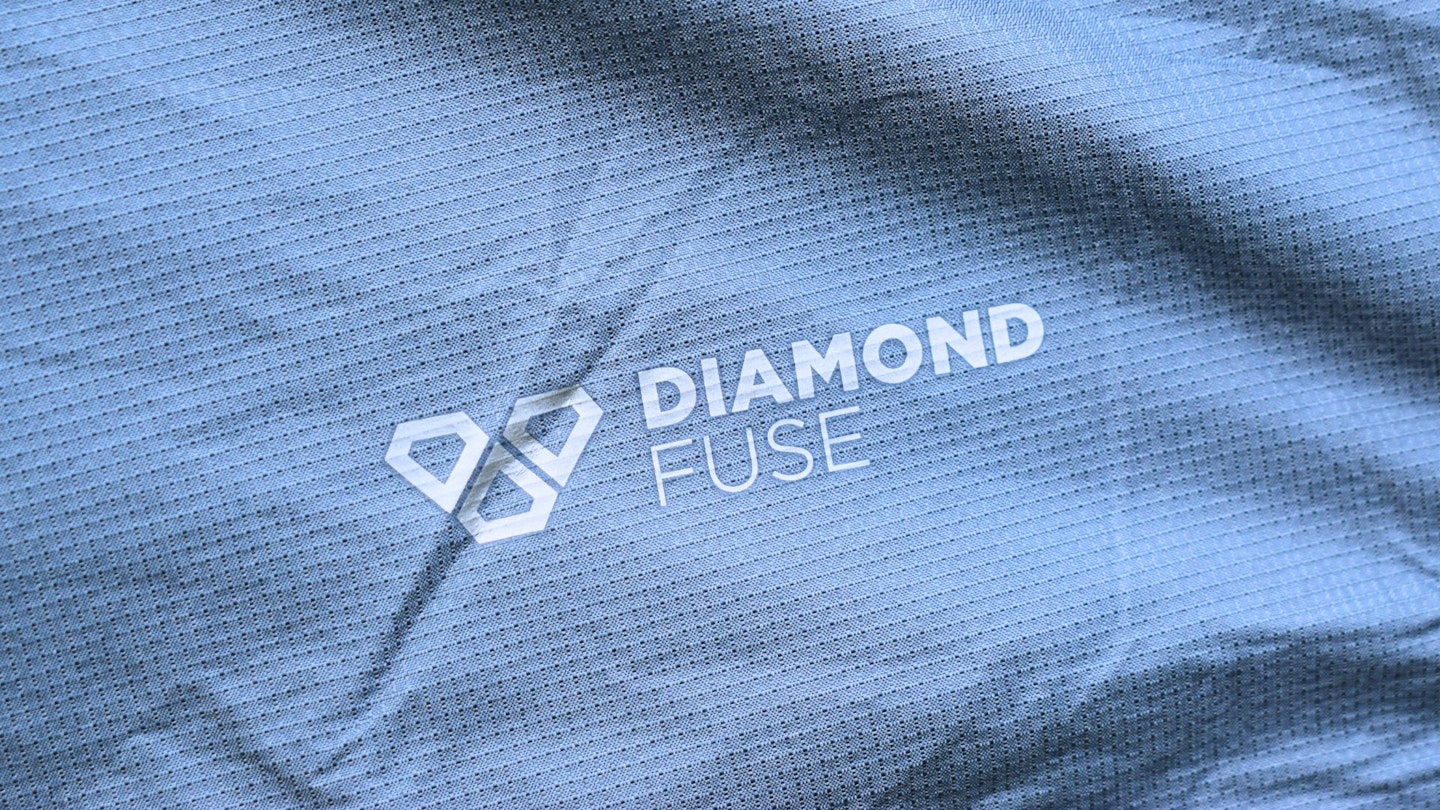
Outdoor Research describes the Helium Bivy as a model “built with premium materials to move fast and light in all conditions”. The top of the bag is made from Pertex Shield Diamond Fuse fabric, with a 2.5-layer construction. This is made from a 30-denier, 100% ripstop nylon. The floor (underside) of the bivvy is made from a stronger, thicker 40-denier 100% nylon with a TPU lamination floor.
In other areas of the bag, there is 100% polyester No-See-Um mesh, and all of the materials in the Helium Bivy are bluesign approved. Overall the materials used feel light and high-tech yet durable, tough and premium.
The other feature to note is the use of reflective trims and a reflective logo. This enables the bivvy bag to be seen in the dark.

In terms of shape, the Helium Bivy is a hooped bivvy bag. A single, ultralight pole is used to create the hooped structure around the head. Similar to a tent pole, this pole – which is made from a flexible plastic known as Delrin – is linked via shock-chord and folds down into five segments with a compact 30cm length. Once connected the pole is 135cm long.
Underneath a Velcro strap on the left-hand side of the bivvy, the pole slides into a sleeve to create a looping, semi-circular canopy with a 50cm height. Each end of the pole is housed securely in a tab of reinforced fabric. Sliding the pole into the sleeve has a slight tendency to snag because of the curvature, but generally the set-up is quick, simple and seamless.
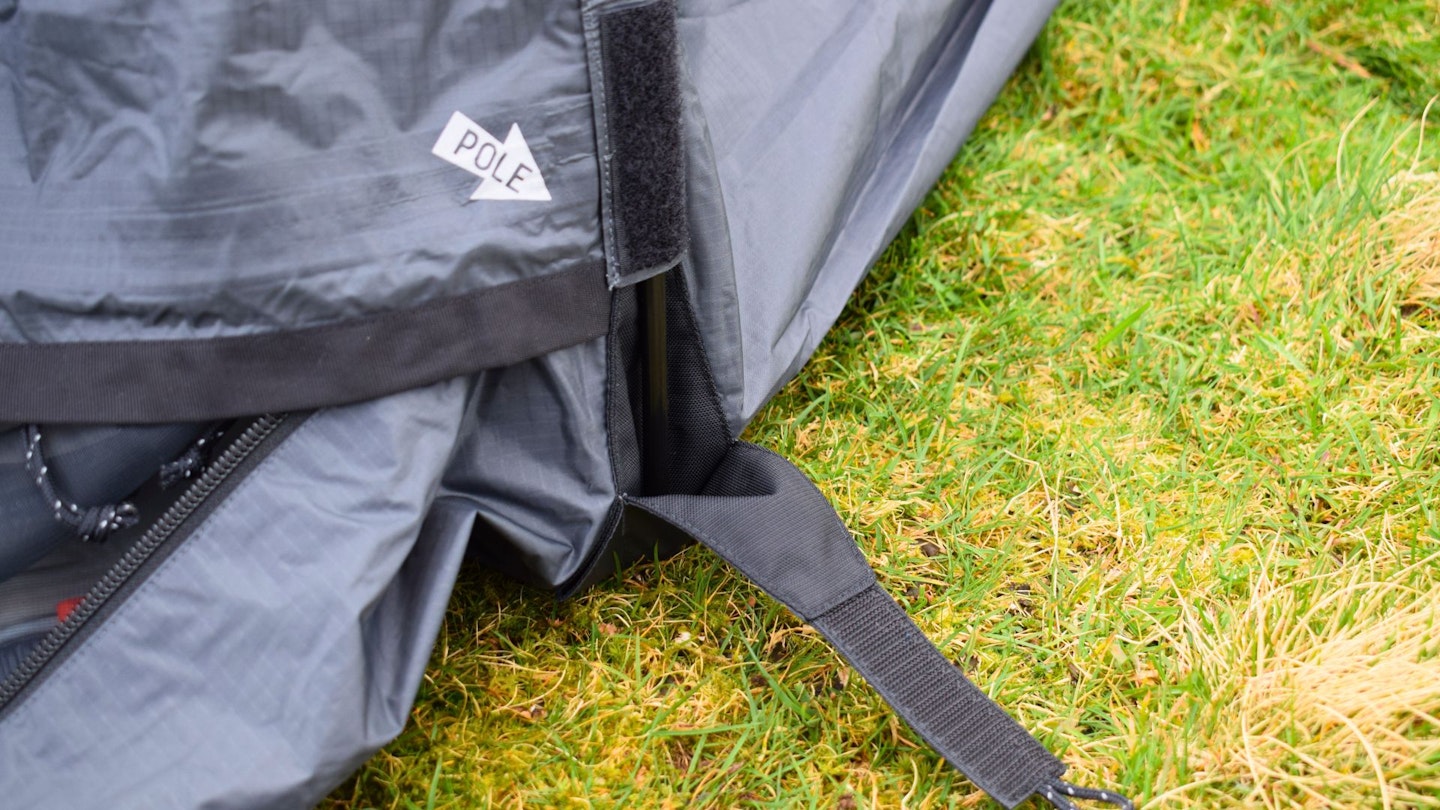
Due to the extra height and shape of this hooped bivvy, you get two stake loops for pegging out the bivvy and to keep everything in place, taut and well-structured. Pegs aren’t included with the price, so you need to buy them separately. In truth a few more pegging points would be helpful if bivvying in blustery British weather, but overall the two points work fine.
One pegging point is at the top left of the bag, the other is at the bottom right, so you get diagonal structure – but it’d probably be better (although at a slight weight penalty) if there were two pegging points at the head end and two at the base. You also get one guy line loop on the top of the hooped canopy, but you’ll need to provide your own guyline to use this.
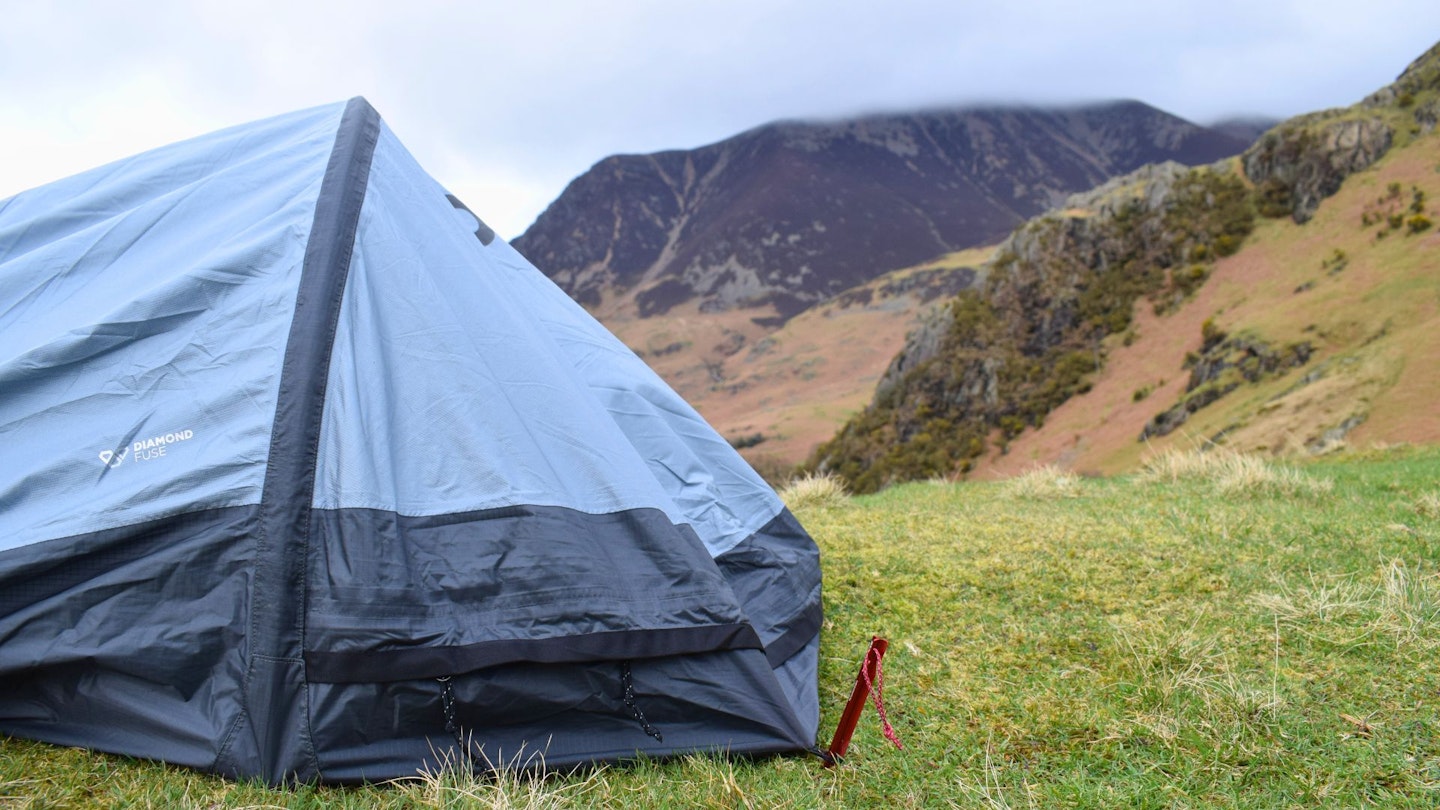
There is no pole for the foot end of the Helium Bivy, but Outdoor Research has added extra height (up to 36.5cm) to the volume in the toe end, so you get an extra bit of room there too – although it’s not that noticeable in practice.
The end result of all of this pole-based structure is that you get considerably more headroom with the Helium Bivy. Rather than the bivvy fabric resting on your face, head and body, as is the case with non-hooped bivvy bags, the Outdoor Research Helium Bivy provides a joyous gap between you and the top of the bag.
It’s only 50cm but it really enhances all-round comfort for a better night’s sleep. You don’t feel exposed or restricted, and there’s more space for reading, checking your navigation app on your phone and generally carrying out camp “admin” inside the bivvy. It’s a revelation.
Another benefit of a hooped bivvy is that by creating a structure with steeper, sloping walls around the head, rain will shed off the fabric due to gravity. This further helps improve waterproofing. Conversely non-hooped bivvy bags are just flat and thus rain has a tendency to pool on top of their fabrics.
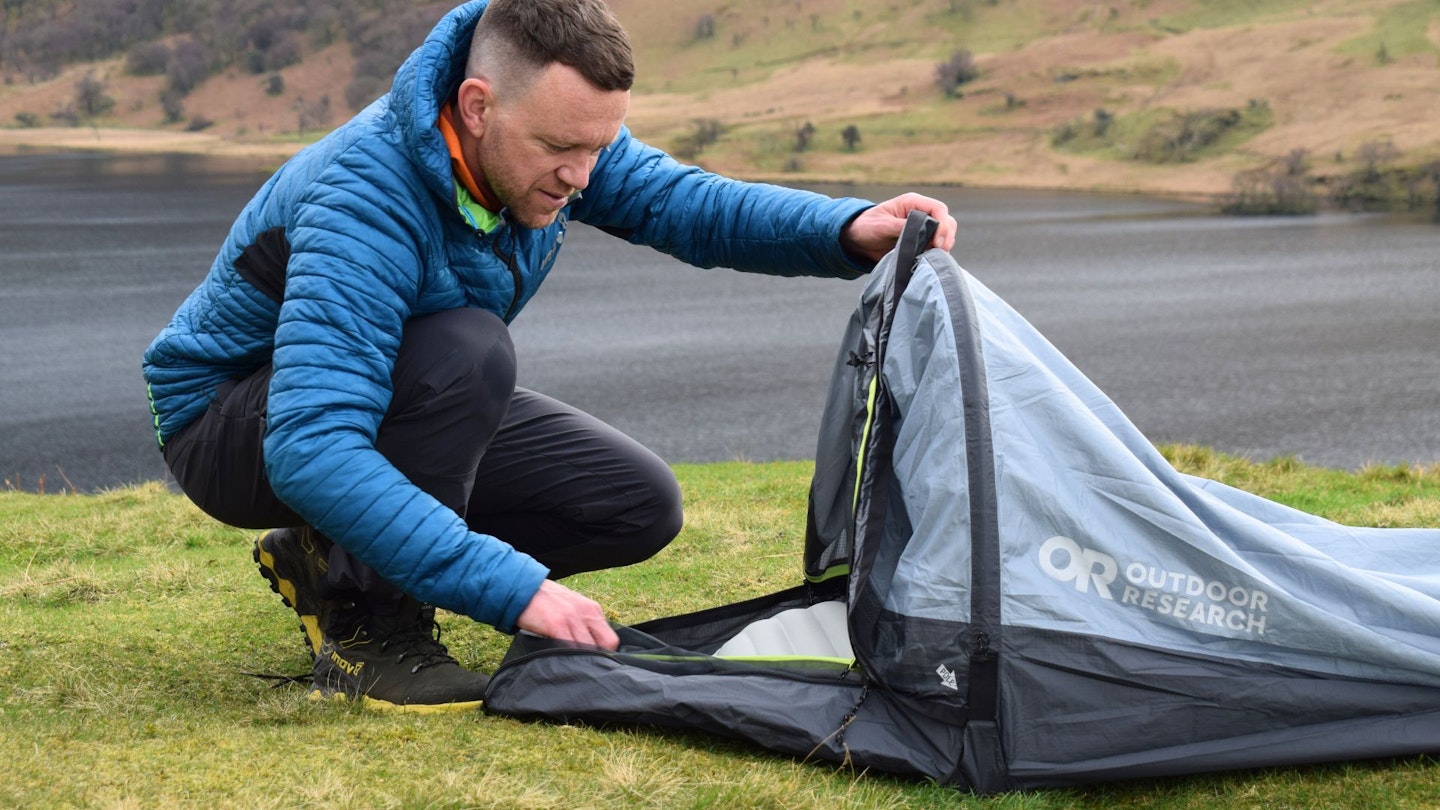
Access to the Outdoor Research Helium Bivy is from the top via a “clamshell opening”, which is wider than many and thus slightly easier to get in and out. The opening is very versatile too, with multiple zipper options.
On dry, clear nights you can leave it completely open; if midges are a problem, you can just close the mesh cover; or for complete weather protection in poor conditions, you can fully close and 100% seal both the mesh and the waterproof outer.
In fact, if you need waterproof protection but want to maximise ventilation, you can even leave a slither of the outer zipper open too – so the options are genuinely very versatile. All of the zippers are easy to operate when you’re inside the bivvy bag.
Size, weight, and packability
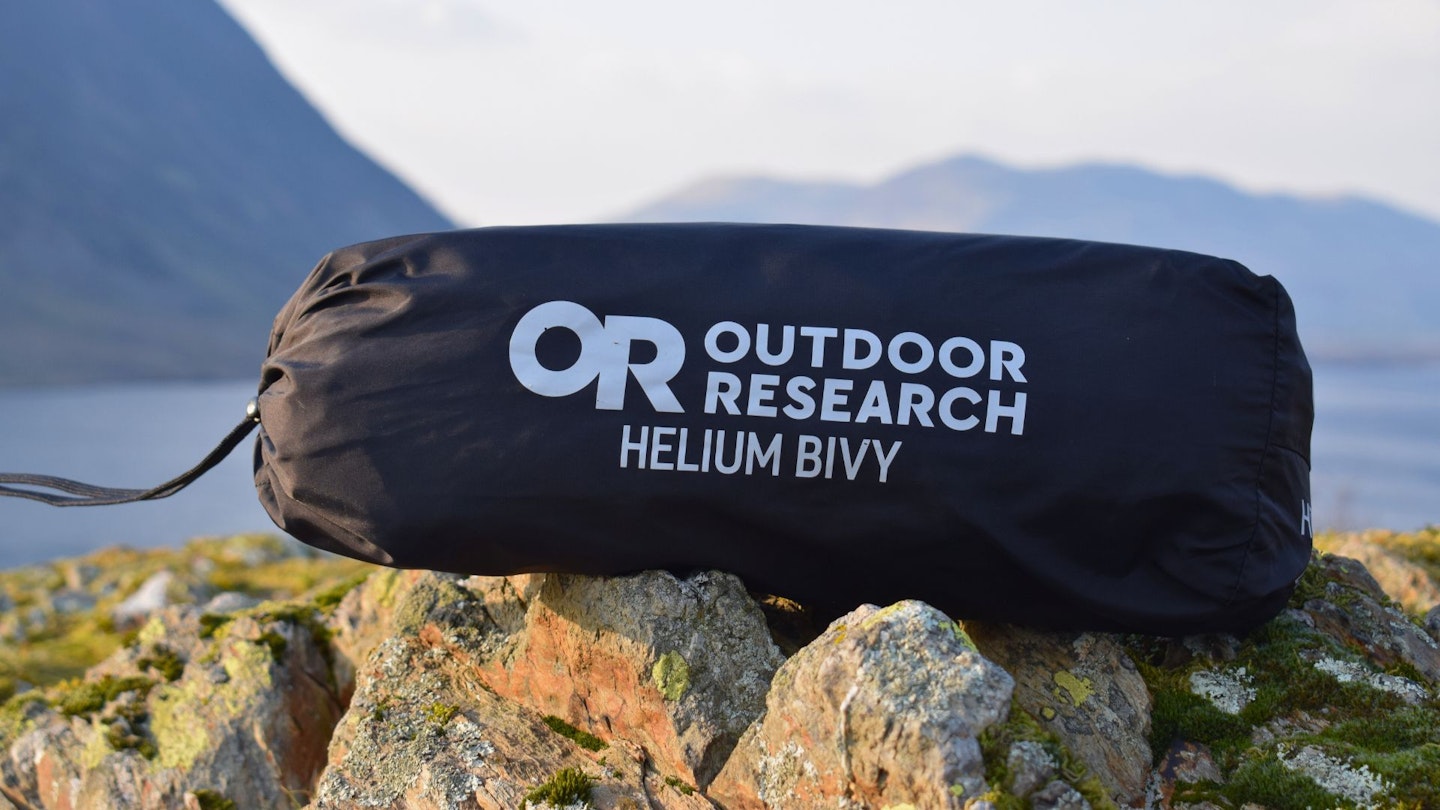
For those wanting the comfort of a poled bivvy but without the extra weight, the Outdoor Research Helium Bivy is perfect. Despite having a curved pole that lifts the upper fabric away from the face, it weighs only 494g.
Plus, on occasions where you want to go even lighter or the ground conditions mean pegging out the pole isn’t feasible, the Helium can be used pole-less. The pole weighs 49g, so removing it takes the weight down to around 445g.
In terms of its size, the Helium bivvy bag has official dimensions as follows: 208cm long, 66cm wide at the head and 48cm at the foot, although by our measurements it’s perhaps marginally wider at the head (70cm) and footbox (65cm).
We guess it depends exactly how and where you measure the bivvy bag dimensions, and there doesn’t seem to a standardised way to do this between brands, so making like-for-like comparisons is fraught with errors.

Overall the Helium’s dimensions are relatively small compared to some others, such as the Alpkit Hunka XL and Rab Trailhead Bivi, which are both longer and wider. However the hooped design with a raised canopy over the head gives you a sensation of more internal room and volume, and the Helium doesn’t feel as small as the dimensions suggest.
At the head end the pole raises the canopy to 50cm high and at the foot end it’s 36.5cm high. Despite these volume-increasing features, some taller and bigger campers may find the Helium a little small and restrictive.
The Helium Bivy packs down nice and compactly, sized 31 x 9cm. It can be stored in the storage sack provided, which weighs 15g and has a drawcord closure. The shape of the Helium Bivy when packed away is tall and thin, compared to many other bivvy bags which tend to be shorter yet girthier.
Waterproofing and breathability
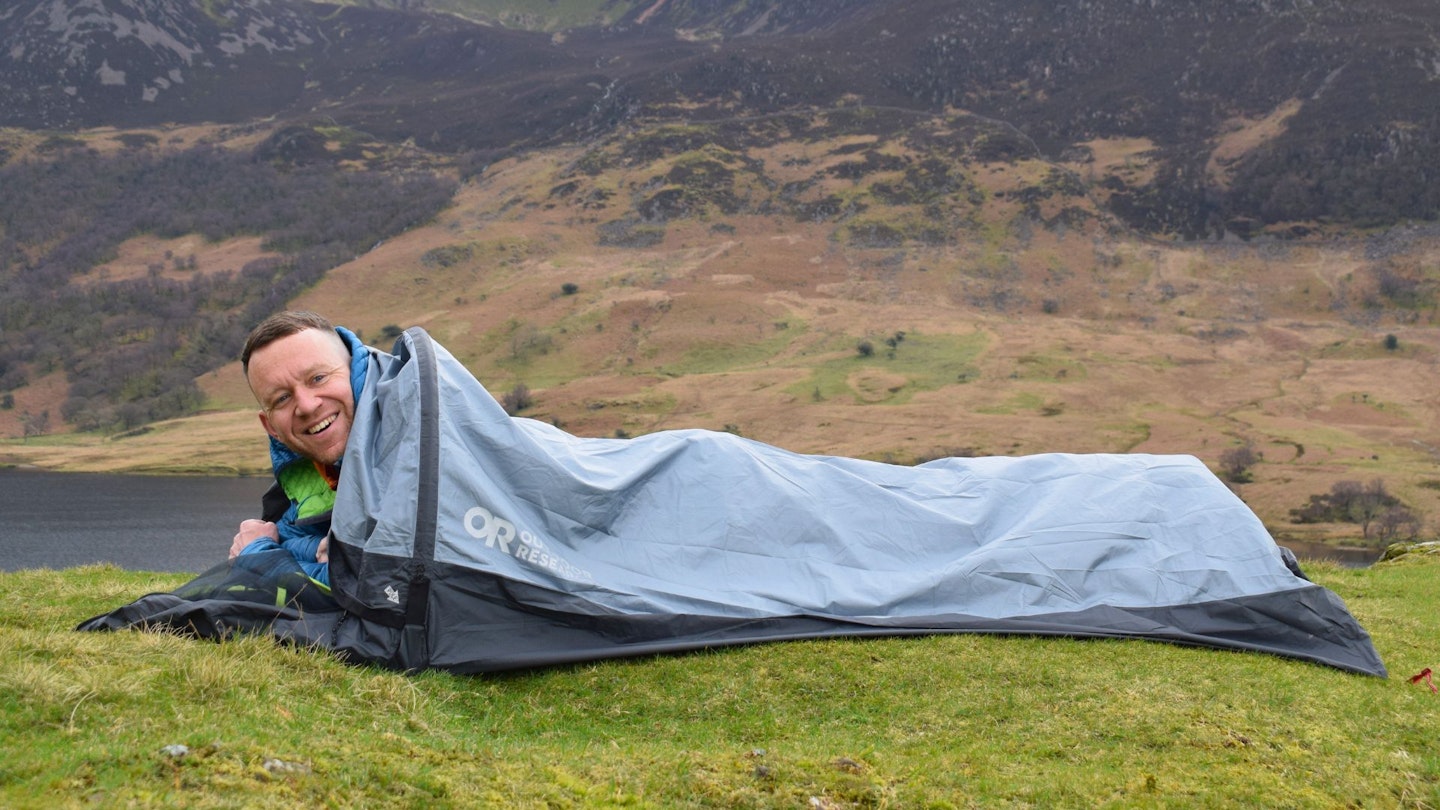
The Outdoor Research Helium Bivy has some of the best raw waterproofing and breathability stats we’ve ever seen for a bivvy. It has a hydrostatic head rating of 20,000mm, which is first-rate – many other bivvy bags are graded at 10,000mm – and it has a corresponding 20,000 g/m²/24hr MVTR breathability rating.
These are impressive ratings and give confidence that the Helium Bivy will be protective in poor weather conditions. All of the seams are fully taped too, in order to further improve waterproofing.
The Pertex material used in the Helium Bivy feels more breathable than many other bivvy fabrics, and this – combined with the mesh covering over the opening – ensures first-rate ventilation.
Verdict

The Outdoor Research Helium Bivy is a top-performing, protective bivvy bag with a hooped design at a surprisingly low weight – but it’s expensive.
Shop this product
How we tested

The Outdoor Research Helium Bivy was tested and reviewed by our Lake District-based freelance writer, James Forrest alongside a range of other bivvy bags as part of a group test.
James was the ideal person to undertake this test because he is one of the UK's most experienced wild campers and backpackers. He's a prolific peak bagger who writes gear reviews for us on LFTO and our magazine, Trail.

